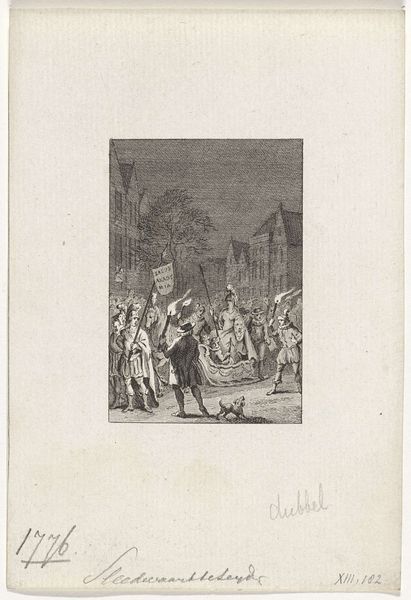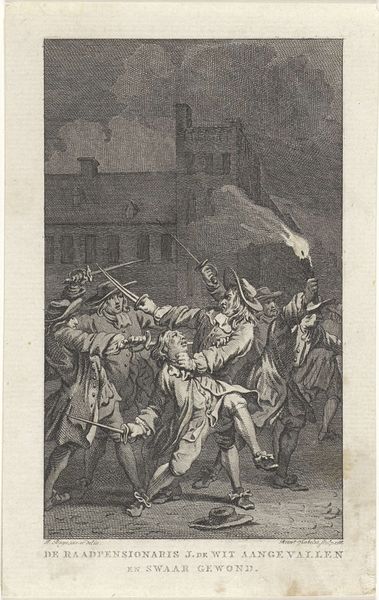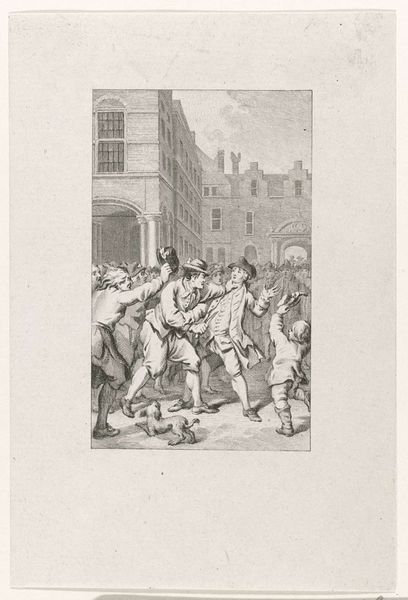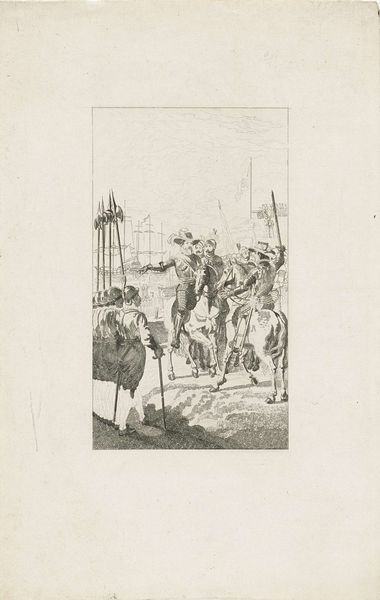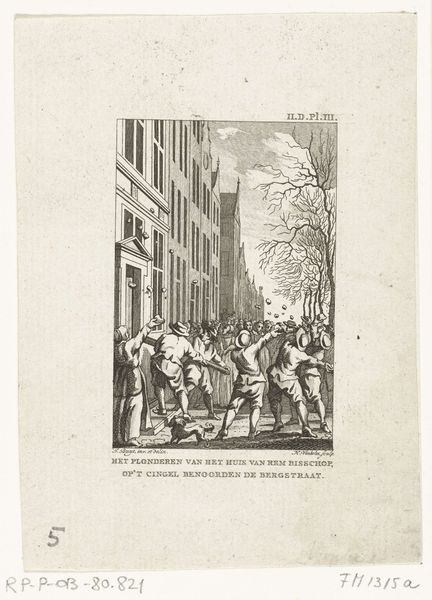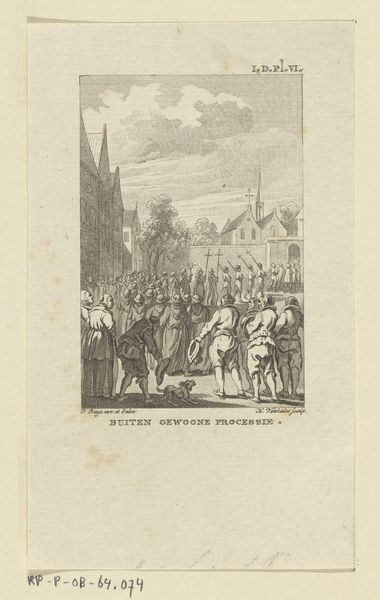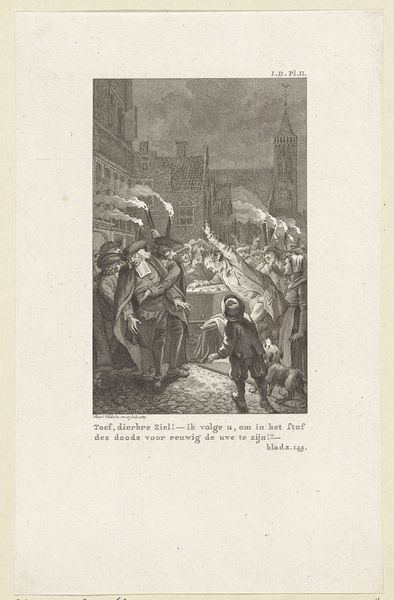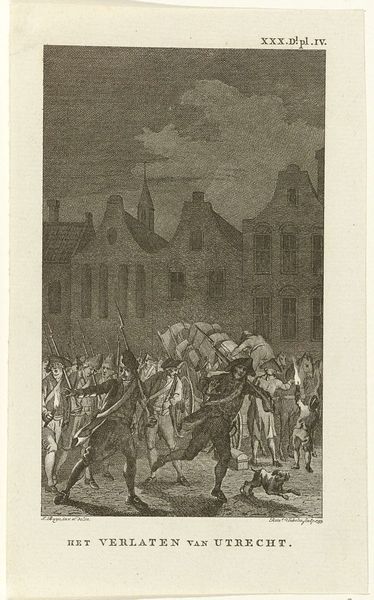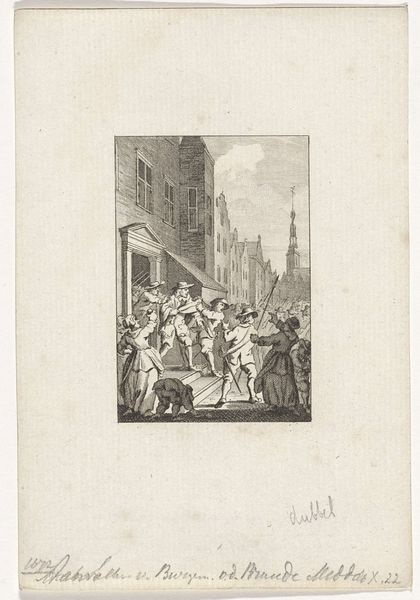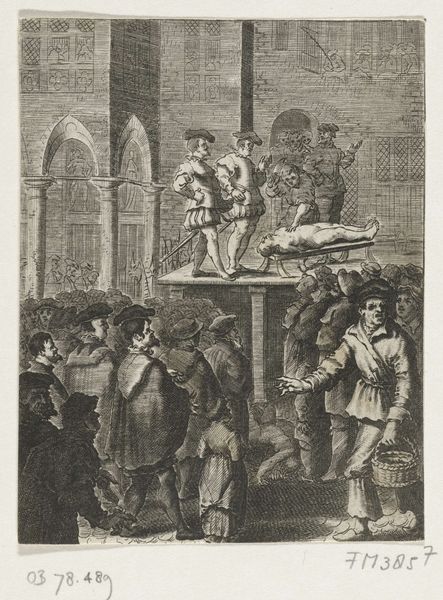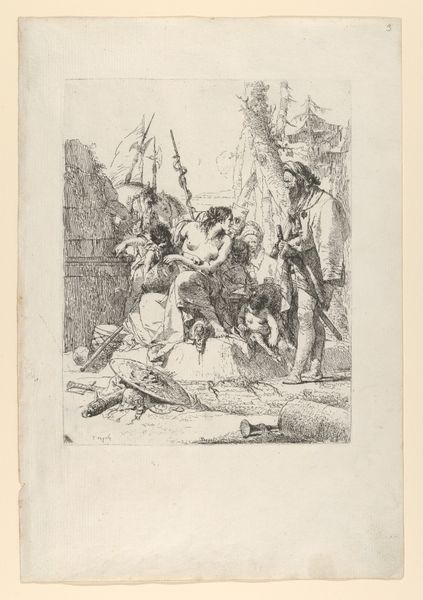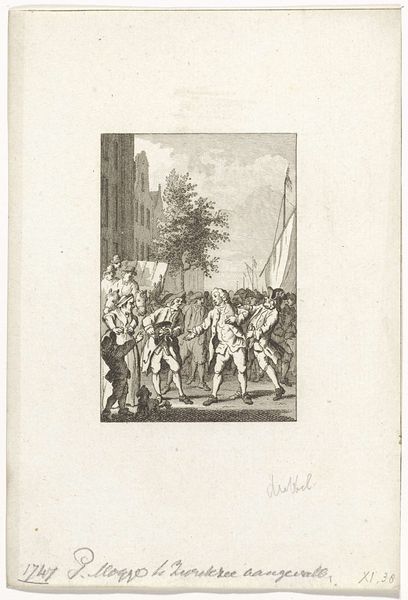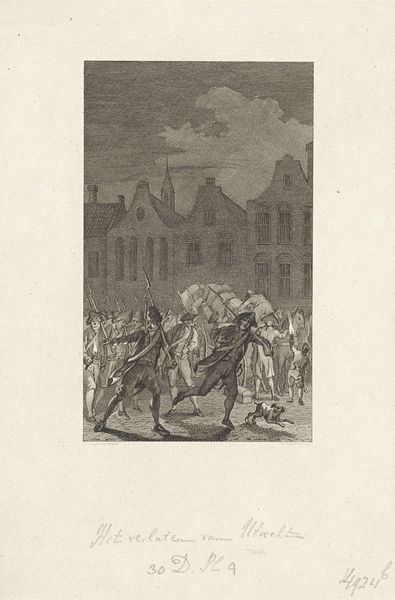
Wegnemen van de deuren van de stadspoort te Franeker, 1788 1795 - 1797
0:00
0:00
Dimensions: height 185 mm, width 112 mm
Copyright: Rijks Museum: Open Domain
Editor: So this is "Wegnemen van de deuren van de stadspoort te Franeker, 1788", or "Removing the doors of the city gate in Franeker, 1788." It's an engraving and etching by Reinier Vinkeles, made between 1795 and 1797. It has this busy, bustling energy about it, and a definite sense of purpose. What's your take on it? Curator: Well, seeing this work, I’m immediately drawn to the historical context. Consider the late 18th century. What did the removal of city gates symbolize then, especially in a place like Franeker? It wasn’t simply about urban planning; it spoke to the weakening of old power structures, the dismantling of boundaries. How does it relate to burgeoning revolutionary ideals? Editor: I hadn't thought of it like that, as a symbol. Curator: Exactly! Think about the people depicted. Are they merely laborers, or are they active participants in this changing social landscape? How does the artist portray their agency? Look closely – are there expressions of resistance, compliance, or perhaps even hope? The baroque style adds drama, but to what end? Is it celebrating progress, or hinting at the complexities of dismantling established norms? What message is embedded in the composition itself? Editor: I guess it's more layered than just a historical record. The act of removing the gates, then, can be interpreted as a physical manifestation of societal change, and the baroque style amplifies the conflicting emotions surrounding that change. Curator: Precisely. It urges us to critically examine whose stories are being told and whose voices are being amplified in this supposed march towards progress. The removal of the city gates may signal liberation for some, but what about those who depended on the security, structure and certainties that they once provided? Editor: That makes me rethink the whole scene. I was seeing progress, but you're pointing out the possible consequences of dismantling structures. Curator: Art often holds uncomfortable truths alongside aspirations. Engaging with its complexities allows for a more nuanced understanding of both the past and our present. Editor: That's given me a lot to think about. It’s never just what’s on the surface, is it? Curator: Never. And that is why it's always rewarding to analyze an artwork’s deep, complex layers.
Comments
No comments
Be the first to comment and join the conversation on the ultimate creative platform.
